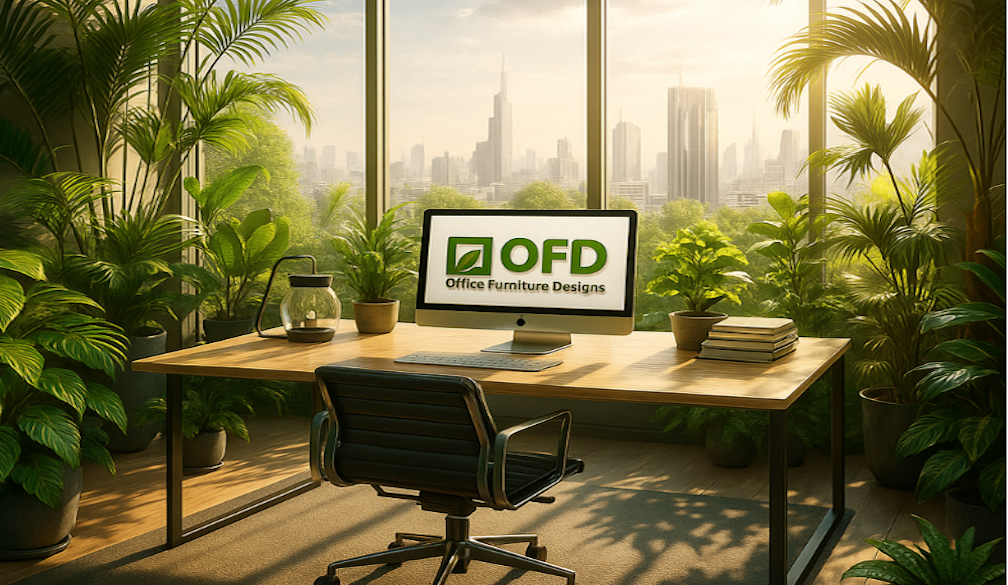Adapting Australian Workspaces: Forward-Thinking Office Furniture Trends for 2025

Workplaces across Australia are rapidly evolving. Driven by new technologies, sustainability goals, and a shift toward hybrid work models, office furniture now plays a far more strategic role in productivity and wellbeing than ever before. For business leaders, government agencies, and education providers, staying ahead of these changes isn’t just beneficial—it’s essential.
This article unpacks the most relevant office furniture trends emerging in 2025, and how smart procurement can deliver lasting value to diverse workforces.
Designing for Flexibility and Fluid Work Models
The hybrid model is here to stay. Whether it’s a council office, university department, or growing business, flexibility is now foundational to workplace design.
Furniture that adapts to shifting workflows is gaining popularity. Think modular desking systems, mobile storage units, and folding partitions. These pieces allow teams to reconfigure their environments quickly and cost-effectively. The result is a workspace that fosters collaboration while still accommodating solo, focused work.
By selecting reconfigurable furniture, organisations can future-proof their layouts without committing to full structural changes.
Ergonomics as a Business Priority
Prolonged desk work remains common across industries, yet musculoskeletal issues are still a leading cause of workplace injury in Australia. That’s why ergonomic furniture isn’t a trend—it’s a long-term investment.
Government buyers, school administrators, and business owners alike are focusing on improving day-to-day comfort for their staff. Height-adjustable desks, lumbar-support chairs, and monitor risers help reduce strain and enhance focus. Modern ergonomic desks even support sit-stand transitions throughout the day, promoting circulation and energy levels.
An ergonomically sound setup shows employees that their health is valued, often improving morale and retention.
Seamless Integration of Technology
As digital tools dominate Australian workplaces, furniture is evolving to keep pace. More organisations are seeking solutions that accommodate devices and connectivity without clutter.
Furniture with inbuilt cable management, pop-up power points, and charging docks are becoming standard in boardrooms, classrooms, and hot-desk areas. These enhancements support tech-enabled collaboration while preserving a clean, professional aesthetic.
In education settings, particularly, tech-integrated desks help support blended learning methods by enabling a seamless shift between online and offline modes.
Prioritising Sustainability
Environmental responsibility now influences procurement across all sectors. Furniture decisions are increasingly tied to carbon targets and sustainable development goals.
Local sourcing is on the rise, with many buyers prioritising Australian-made products to reduce freight emissions and support domestic industry. Additionally, there is strong demand for recyclable components, ethically sourced timbers, and low-emission finishes.
Opting for environmentally certified products is no longer optional—it’s part of a broader shift toward conscious capitalism and government policy compliance.
Aesthetic Cohesion and Brand Presence
The visual identity of a workspace shapes how clients, students, and staff perceive an organisation. Furniture plays a direct role in communicating brand values.
Natural materials, muted tones, and minimalist silhouettes are defining workplace aesthetics in 2025. Whether designing for an open-plan innovation hub or a professional services office, style now blends closely with function.
Purposeful office fitouts can reinforce cultural alignment, boost employee pride, and leave a lasting impression on visitors—all without saying a word.
Inclusivity and Neurodiversity in Design
Modern office layouts must accommodate different working styles, including those of neurodivergent individuals. Diversity in furniture choices enables inclusive participation across teams.
High-backed seating, acoustic zones, and personal storage help individuals tailor their environment to their comfort levels. In libraries, shared workspaces, or multi-agency hubs, providing quiet areas alongside collaborative ones ensures everyone can contribute productively.
This inclusive design philosophy promotes a healthier, more equitable work environment across sectors.
Supporting Remote and Home-Based Work
With hybrid arrangements now entrenched, the demand for professional-grade home office setups continues to grow. Compact solutions that balance comfort and aesthetics are a major priority for remote employees.
Slimline desks, multi-functional storage, and ergonomic chairs tailored for smaller spaces help ensure compliance with workplace safety standards—even in the home. These setups also help maintain consistency across distributed teams.
Small businesses especially are benefitting from offering staff practical guidance and access to quality home furniture, reinforcing professionalism wherever work happens.
Aligning Furniture Decisions with Organisational Strategy
In 2025, furniture procurement isn’t just about aesthetics or ergonomics—it’s about alignment with broader strategic goals. Whether an organisation is undergoing digital transformation, implementing ESG initiatives, or improving employee wellbeing, the physical environment plays a foundational role.
Forward-thinking businesses, educational institutions, and government departments are treating workspace design as a lever for measurable outcomes. For example:
– Enhancing collaboration by designing open, tech-enabled zones
– Supporting mental health with spaces that incorporate quiet rooms and sensory-friendly materials
– Meeting sustainability KPIs through certified, locally sourced furnishings
The most successful organisations are now involving cross-functional teams in their furniture planning—including HR, IT, operations, and sustainability officers—to ensure every purchase contributes to long-term performance.
Ultimately, aligning office furniture choices with organisational strategy helps create environments that don’t just look modern—but operate with purpose.
Final Takeaway: Furniture as a Strategic Asset
The future of office furniture in Australia isn’t about fleeting trends—it’s about responding to deeper shifts in how we work, learn, and collaborate. Organisations that invest in flexibility, ergonomics, inclusivity, and sustainability are better positioned to attract talent, meet compliance requirements, and operate efficiently.
More than ever, the right furniture can help create workplaces that people want to be part of—and that’s a powerful advantage in any sector.














